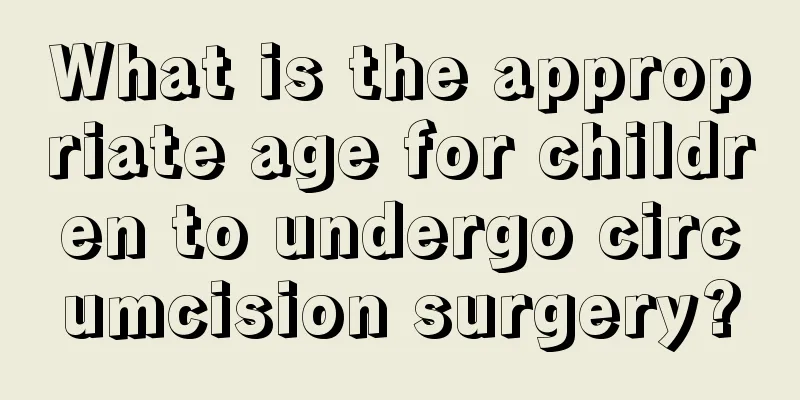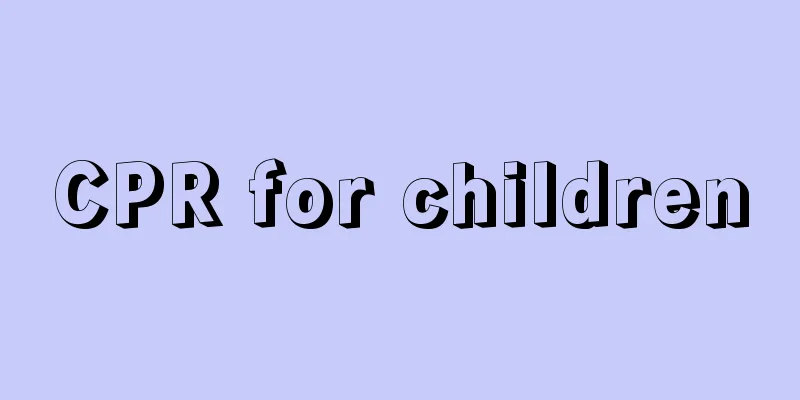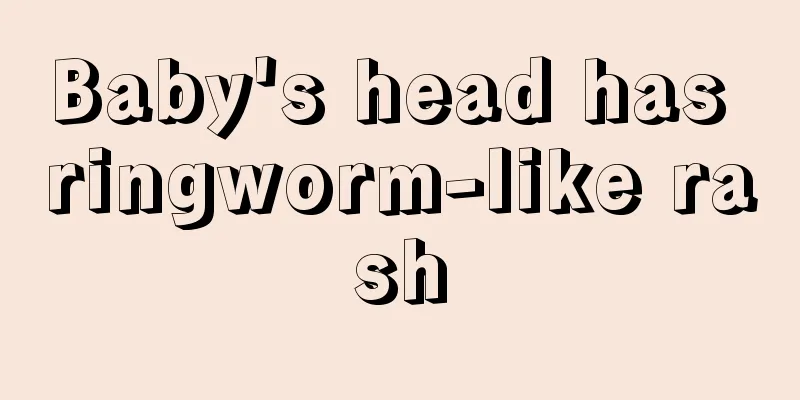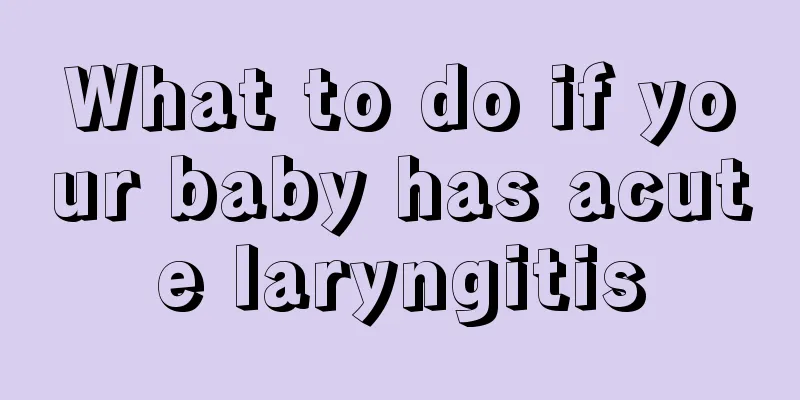The dangers of a child having a persistent fever of 38 degrees
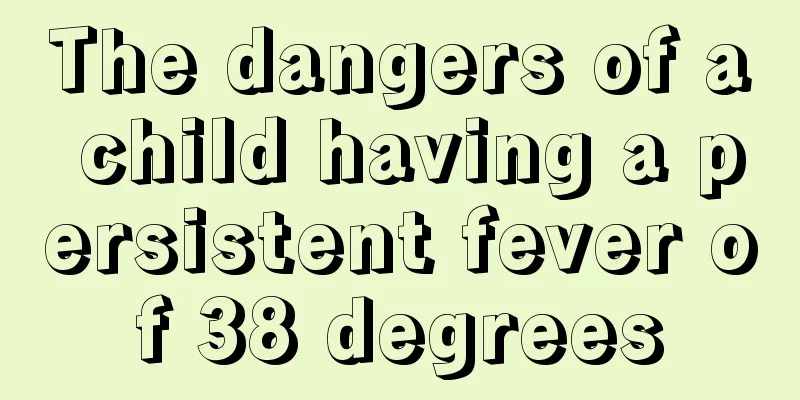
|
If a person's body temperature is around 38 degrees, it is considered a high fever. At this stage, it will cause some problems such as persistent high fever or nerve convulsions. In severe cases, the brain's nervous system may be affected. These will happen to children, and in severe cases, complications may occur. Therefore, when a child has a persistent high fever, parents need to take the child to check as soon as possible. The harm of children's cold and high fever Generally, if a child's body temperature fluctuates around 38℃, it can be diagnosed as a low fever, and if the temperature exceeds 39℃, it can be diagnosed as a high fever. High fever is very harmful to the human body. It significantly increases the body's consumption and damages the functions of important organs such as the heart, brain, liver, and kidneys. It can cause a series of symptoms such as rapid heartbeat and breathing, loss of appetite, nausea, vomiting, constipation, and even unconsciousness and convulsions. This is like adding insult to injury for critically ill patients, who need careful treatment and care. Treatment is directed at the cause. A child's high fever is just a symptom of certain diseases. Simply reducing the fever is sometimes not effective, and the body temperature rises again once the effect of the medicine wears off. Therefore, when you have a high fever, you should pay attention to finding the cause and treat it accordingly. Fever caused by infectious diseases will naturally subside as the condition improves after treatment with sufficient and effective antibiotics. Therefore, when a child has a high fever, parents should often wipe the eye mucus with a clean towel and put some eye drops in to prevent corneal infection. At the same time, give children more vitamin-rich foods to increase the nutrition of their eyes, such as eggs, milk, pork liver, carrots, fish, etc. Always pay attention to your child's eyes. If you find any abnormal changes, send him or her to the hospital for diagnosis and treatment as soon as possible. Do not delay treatment to prevent corneal softening and perforation, which may lead to blindness. Parents should learn how to face it skillfully and knowledgeably. When a child has a fever, other symptoms may occur: accelerated heartbeat, quickened breathing, extreme discomfort, loss of appetite and general weakness. Younger babies may not speak and may even become restless and cry. At this time, moderate treatment to keep the body temperature from being too high is reasonable, especially for infants and young children with febrile convulsions or congenital heart disease. Experts have given some suggestions. As a parent, you should reduce fever scientifically in this way: 1. Wear less clothes If your baby's limbs, hands and feet are warm and he is sweating all over, it means he needs to dissipate heat and he can wear less clothes. The traditional concept of "cold" held by the older generation has led to the common misconception that one must wear more clothes when having a fever, but in fact the opposite is true. When you have a fever, the skin has the largest surface area and the best heat dissipation effect. If you can take off too much clothes, a lot of body heat can be discharged through the loose and cool surface, and the body temperature can be easily lowered. 2. Wipe your body with warm water Undress the baby and rub the whole body with a warm water (37℃) towel. This will dilate the blood vessels in the baby's skin and release body qi. In addition, when water vapor evaporates from the body surface, it will also absorb body heat. Some parents use some folk fever-reducing methods, such as cold water or alcohol baths, to reduce their children's fever, which is inappropriate. When a baby has a fever and his hot skin suddenly comes into contact with cold water or alcohol, the baby will react violently and may even have convulsions; the smell of alcohol will make the baby drowsy, as if he is drunk. 3. Keep the air circulating in your home If your home has air conditioning, maintain the room temperature between 25~27℃. You can place the child in an air-conditioned room or blow an electric fan around him to slowly lower his body temperature, which will make the child feel more comfortable. But if the limbs are cold and the patient is shivering violently, it means that the patient needs warmth, so he should be covered with a blanket. 4. Give your child plenty of water Drink water to help you sweat and prevent dehydration. Water has the function of regulating temperature, which can lower body temperature and replenish water lost in the baby's body. 5. Use antipyretics when appropriate When the baby's core temperature (rectal temperature or ear temperature) exceeds 38.5℃, you can use antipyretic solution or suppository appropriately. I hope every parent can raise their children scientifically, and I hope every baby can grow up healthily. |
<<: Why are children always sleepy?
>>: Does your child have blood on his butt after defecation?
Recommend
What to do if your child has tooth decay in his permanent teeth
Children's teeth are not fully developed at a...
How to make mashed potatoes for babies
Baby food is all made from purees, including vege...
What causes birthmarks in babies? Maybe it's genetic
There are many reasons for the formation of birth...
What to do if your baby has bleeding stool and anal fissure
Parents are very worried if their baby has proble...
What's wrong with the bulge of the front fontanelle?
The anterior fontanelle is unfamiliar to mothers ...
What to do if your two-year-old baby has O-shaped legs
It is a common phenomenon for two-year-old babies...
How to give first aid to a child who is having a convulsion?
Children's body resistance to disease is rela...
One and a half year old baby can't walk_One and a half year old baby can't walk
Generally speaking, babies with normal growth and...
What should parents do if their children have poor self-control?
Some children have poor self-control and need adu...
What causes high lead levels in children? Be careful with these things around you
We all know that if the lead content in the human...
Newborn baby is sleepy and not willing to feed
When it comes to the issue of newborn sleepiness,...
What is the best treatment for cerebral palsy in children?
Children with cerebral palsy have become a diseas...
What should I do if my three-month-old baby doesn't eat well?
When giving birth for the first time, many mother...
What to do if the baby girl is red and swollen below
Many parents believe that children do not need vu...
How to check for developmental disabilities in children?
When a child's body has any abnormality, it w...




